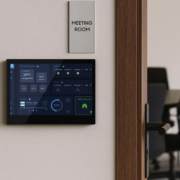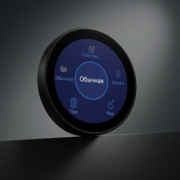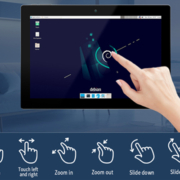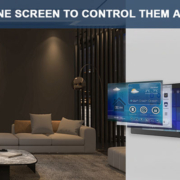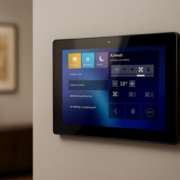How Smart Home Control Panels Are Revolutionizing the Use of Smart Home Appliances
As the smart home industry continues to evolve, consumers are embracing a wide range of smart home appliances—from refrigerators and washing machines to robotic vacuum cleaners and HVAC systems. However, managing multiple devices across various apps and platforms can quickly become overwhelming.
This is where the smart home control panel comes in: a centralized, intuitive interface that allows users to manage and automate all their smart home appliances seamlessly. In this article, we’ll explore how control panels are becoming the nerve center of intelligent homes and how companies like Portworld are pushing the boundaries of usability, integration, and innovation.
1. What Are Smart Home Appliances?
Smart home appliances are devices equipped with connectivity (Wi-Fi, Zigbee, Z-Wave, Bluetooth) and intelligent functions that allow for remote control, automation, and integration into home ecosystems. Common examples include:
- Smart ovens and refrigerators
- AI-powered washing machines and dryers
- Voice-enabled dishwashers
- Robot vacuums and smart air purifiers
- Energy-efficient HVAC systems
While each appliance provides specific features, true smart home efficiency comes from unified control—and that’s where the smart control panel shines.
2. The Role of a Smart Home Control Panel
A smart home control panel is a wall-mounted or portable touchscreen interface that serves as the central command hub for all connected devices. Instead of relying on multiple apps and accounts, the control panel offers:
- One-touch control over appliances, lighting, security, and climate
- Scene automation (e.g., “Good Morning” activates lights, coffee machine, and HVAC)
- Energy usage monitoring
- Voice assistant integration (Google Assistant, Alexa, Siri)
- Real-time alerts from appliances (e.g., oven preheated, washing cycle completed)
3. How Portworld Bridges the Gap Between Appliances and Control
Portworld is a pioneer in intelligent control interfaces, offering 4-inch and 5-inch smart home control panels powered by Android or Linux. These panels are specifically designed to work with all major smart home ecosystems, making them ideal for managing smart home appliances.
Key features of Portworld control panels include:
- Full compatibility with Tuya, Matter, Zigbee, and Wi-Fi smart appliances
- Customizable UI for appliance status display and quick actions
- Support for third-party apps like Smart Life, Home Assistant, or proprietary platforms
- PoE-powered options for streamlined and flexible installations
- Local automation capabilities, reducing dependence on cloud latency
Whether you’re looking to manage a smart washer or monitor an AI oven’s progress, Portworld panels simplify everything into a single screen interface.
4. Benefits of Integrating Smart Appliances with a Control Panel
Efficiency: Instead of switching between 5–10 apps, users access everything from one screen.
Automation: Set triggers and routines (e.g., start dishwasher when electricity is cheapest).
Safety: Get notified if an appliance malfunctions or is left on accidentally.
Family-friendly: Even children and the elderly can easily interact with a wall-mounted screen.
5. Future Trends: Interconnected Homes with Smarter Control
The next wave of smart homes will focus on deep interoperability. Emerging standards like Matter will allow seamless integration of appliances from different brands into one system. Control panels will evolve to:
- Use AI to suggest routines based on user habits
- Offer predictive maintenance alerts
- Manage energy consumption intelligently
- Integrate with solar panels and battery systems for true smart energy homes
Portworld is at the forefront of these developments, offering OEM/ODM customization for smart appliance brands and integrators looking to future-proof their ecosystems.


